Alaska Economic Trends
Alaska Economic Trends is a monthly magazine that covers a range of economic topics.
Sign up for a free electronic subscription. 
Sign up for a paid print subscription.
Alaska Economic Trends are searchable from 1961 to the present using the Trends search page. The search can include any combination of the following: Key Words, Date Range, Author, Category

Alaska added about 1,600 jobs in 2019 after losing more than 11,000 during the recession of the prior three years. We forecast that trend will continue this year, but at a slower rate of 0.3 percent, or about 1,100 new jobs.
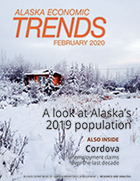
Alaska's population decreased 0.4 percent from July 2018 to July 2019, our new estimates show. The biggest drivers were a decline in the number of people moving to Alaska and fewer births.
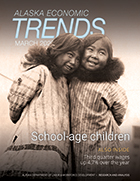
School-age children make up about 18 percent of Alaska today, down from a peak of 29.2 percent in 1970.
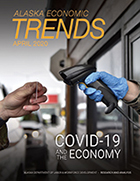
Answering initial questions about the virus' short-term economic impacts.
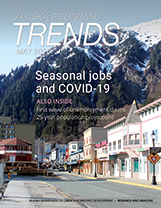
Following up on Alaska's economy and COVID-19, including a look at seasonal jobs and the first wave of elevated unemployment claims.
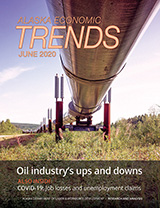
The industry's history of employment swings and how the current situation differs, and detailed April data on COVID-19-related job losses and April unemployment insurance benefit claimants.
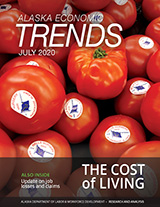
Inflation was modest in 2019, but prices plummeted in the spring with the pandemic. This yearly cost-of-living edition features a range of cost comparisons, between Alaska and the nation and by city.
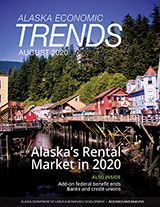
Rents held steady and vacancies rose for a fourth straight year, our annual rental survey shows.
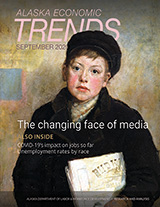
Traditional forms of media have been on a long decline in Alaska and nationwide.

Every other year, we project Alaska's jobs by industry and occupation over the decade.
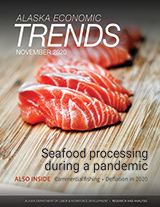
An industry that's used to volatility faced a summer salmon season like no other.
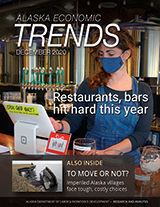
The eating and drinking industry has struggled most during the pandemic.
